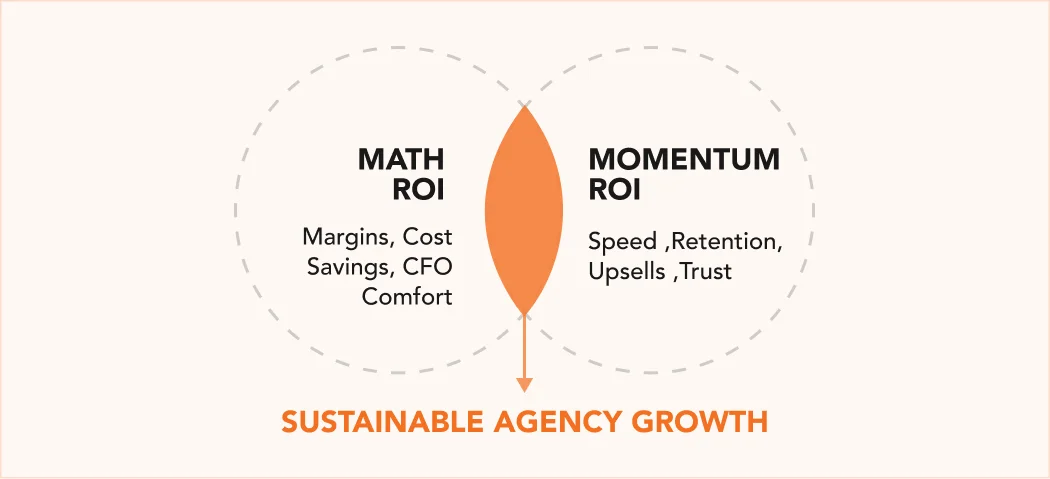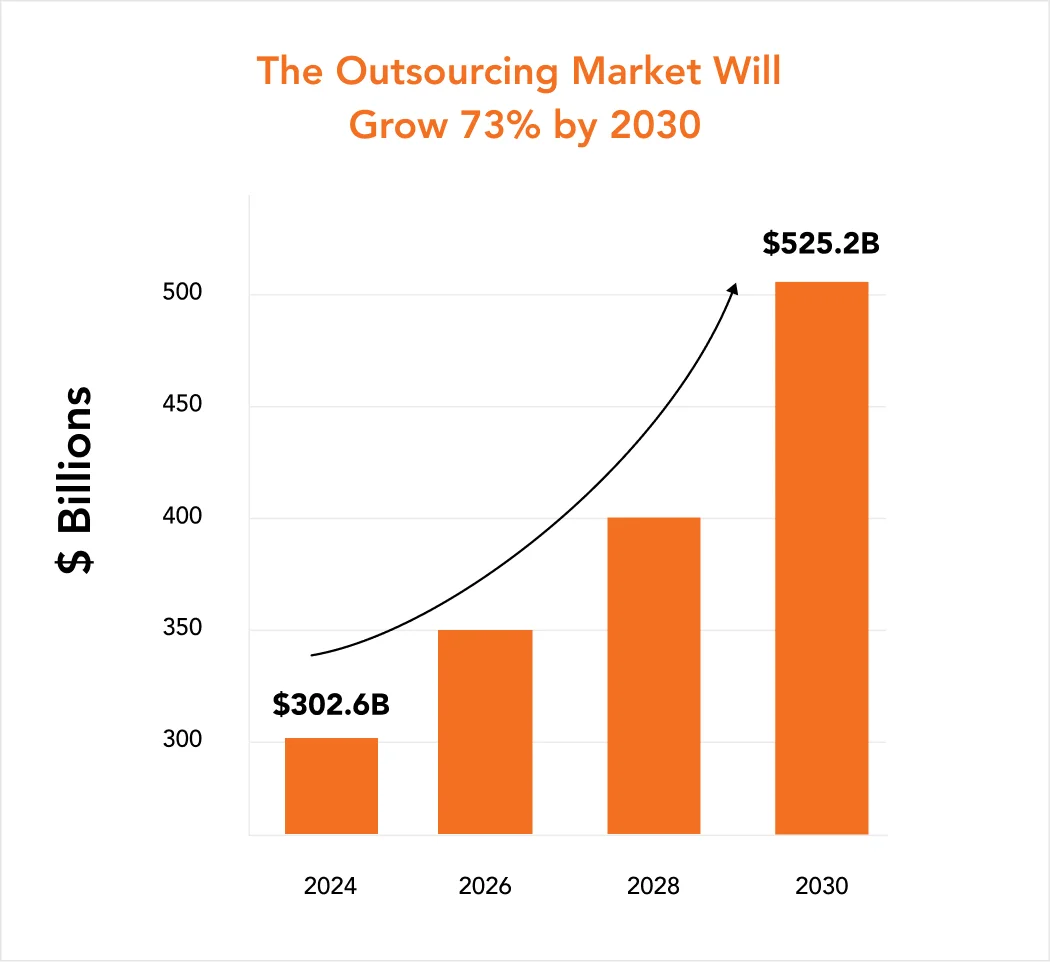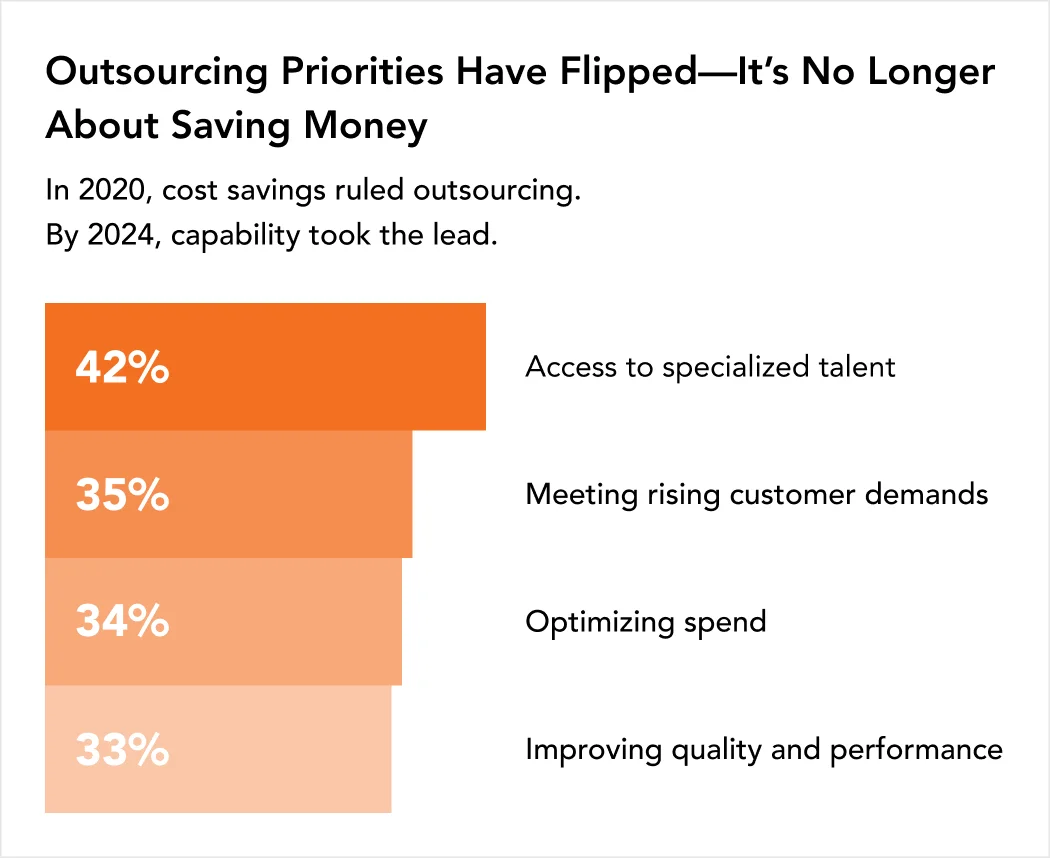
Every agency leader knows the moment.
The CFO slides a spreadsheet across the table.
It looks safe: salaries vs. freelancers, the “savings” of stretching staff, the
hourly math of outsourcing. But here’s the trap: spreadsheets only measure invoices—not outcomes.
They don’t measure the deal you lose when a competitor ships first.
They don’t capture the renewal you miss when a client stops trusting you.
They don’t show the upsell you never pitched because your team was maxed
out.
At White Label IQ, we’ve been in that same room—watching the “cheaper” option cost far more in momentum, trust, and growth.
Math ROI keeps the CFO calm. But Momentum ROI keeps your agency
alive.
This blog shows you why you need both lenses—and how to spot partners
who actually accelerate your growth.
Math ROI vs. Momentum ROI: Measuring Strategic Partnerships Beyond Cost

When agencies evaluate a partner, the default move is to run the math.
Math ROI is the spreadsheet lens. It asks questions like:
Cost avoidance:
Does outsourcing cost less than recruiting, training, and retaining staff?
Capacity expansion:
How much new billable work can we absorb without adding fixed headcount?
Margin protection:
Will this reduce overtime, scope creep, or freelancer premiums?
Time value:
How many senior hours are freed for sales, strategy, and client relationships?
These questions matter. They protect profit in lean quarters. They reassure a skeptical CFO. They make sure the partnership is defensible on paper.
That’s where Momentum ROI comes in—the exact gap White Label IQ was built to close. It’s the second lens that captures the growth accelerators spreadsheets always miss: speed, trust, retention, and capability.
- Speed-to-market: Getting to launch first wins attention and creates disproportionate share gains.
- Client retention: Delivering consistently raises trust, and even a
5% retention lift can boost profits by 25–95%. - Upsell readiness: Clients who trust your execution will greenlight bigger, riskier ideas.
- Access to specialized talent: Today, leaders outsource not just for savings but for skills they can’t build fast enough.
- Brand lift: Agencies known for never missing deadlines get first calls when big opportunities land.
Comparison Table: Math ROI vs. Momentum ROI
| Lens | What It Asks | Why It Matters |
|---|---|---|
| Math ROI | Does this protect margins? |
Keeps CFO and finances disciplined. |
| Momentum ROI | Does this accelerate growth? |
Captures renewals, upsells, speed, and reputation—the hidden multipliers. |
Momentum ROI tells you if the partnership makes you stronger.
Why Strategic Partnerships Fail
(and How to Make Them Work)
Partnerships are no longer back-office experiments. They’re now a front-line growth engine.
As Harvard Business Review notes, corporate alliances are expanding rapidly and already account for nearly a third of company revenue and value. That’s why agencies are leaning harder than ever on outside partners for design, development, and even AI execution.
Despite their expansion, the same research shows most alliances—60–70%—still fail.
The postmortems read like déjà vu for agency owners:
- Unrealistic expectations—scope or speed promised without foundation.
- Cultural misfit—partners who don’t understand agency realities like shifting scopes and client politics.
- Lack of trust—both sides acting like vendors, not allies.
- Weak governance—no steering committee, no accountability loops, no way to course-correct.
That’s the paradox: alliances are booming and breaking at the same time.
For agencies, this should be a flashing signal. Partnerships can fuel revenue, retention, and pipeline growth—but only if they pass both lenses: Math ROI and Momentum ROI.
As Harvard Business Review notes, the best alliances succeed not by negotiating harder on rates, but by building the relational and operational scaffolding for trust.
How to Measure What Math Misses
Momentum might feel intangible — but you can measure it.
That’s what separates agencies that just outsource from those that truly
scale.
The White Label IQ Momentum Scorecard is a simple diagnostic you can run quarterly. It shows whether a partner is accelerating your business or just filling hours.
Why this matters:
- A 5% increase in retention can boost profits by 25–95%.
- Existing clients spend 67% more than new ones.
Use the interactive scorecard below to see what kind of partners
you really have.
White Label IQ
Momentum Scorecard
Rate a partner across six momentum drivers to reveal whether they are a Gap Filler or a Growth Driver.
Instructions
Score each driver from 1 (low impact) to 5 (high impact). Your total updates automatically. The result band shows whether this partner is a High Momentum driver, Moderate Momentum, or a Gap Filler.
Speed-to-market impact
Do they shorten delivery timelines in ways that affect revenue or satisfaction?
Bottleneck reduction
Do they reduce workflow/management headaches for agency leaders?
Client retention influence
Has their work directly contributed to client renewals/extensions?
Upsell enablement
Do they allow pitching bigger, riskier, or more profitable projects?
Quality without oversight
Do they deliver with minimal correction/hand-holding?
New service capacity
Have they enabled you to offer capabilities you couldn’t before?
20–30 = High Momentum; 15–19 = Moderate Momentum; <15 = Gap Filler.
When we run this scorecard with agencies, the conversation shifts instantly — from defending costs to unlocking growth.
The scorecard isn’t just a measurement tool.
It’s a conversation starter.
Because in the end, the real ROI of a partner isn’t whether they bill at $50 or $80 an hour.
It’s whether they create the momentum that keeps your agency winning.
The White Label IQ Partner Fit Test: 4 Questions That Prevent Expensive Regret
Even a partner with strong math and momentum potential can hurt you if the
fit isn’t right.
This is where agencies stumble—hiring a technically capable vendor who drains more energy than they save.
That’s why before signing (or renewing) with any partner, run them through the White Label IQ Partner Fit Test. Four yes/no questions cut through the noise:
- Revenue doors → Will this partner open opportunities I couldn’t pursue alone?
Example: Can they give me the depth to pitch bigger, faster, or more complex projects confidently?
- Cognitive load → Will they reduce my team’s mental bandwidth drain, not just complete tasks?
A true partner removes supervision headaches instead of adding more Slack pings.
- Capacity confidence → Will their presence help me say “yes” to opportunities without fear of overextension?
If every new project still feels like a gamble, they’re amplifying the risk.
- Agency fluency → Do they understand the realities of agency life—shifting scopes, client politics, impossible deadlines—and can they adapt without drama?
If they need hand-holding on basics, they’re a liability, not leverage.
How to Use It:
- If you answer “yes” to all four → you’ve found a growth partner with momentum potential.
- If you answer “no” to two or more → you’ve hired a gap filler, not a growth driver.
This filter came straight out of our own scars—the times we chose partners who looked good on paper but drained more energy than they saved.
Score them before you sign.
Because vague trust now = expensive regret later
The White Label IQ Partner Fit Test isn’t just procurement hygiene. It’s protection from outsourcing panic buys that solve today’s workload but sabotage tomorrow’s pipeline.
Case Study Snap—When Momentum Paid Off
Sometimes the difference between Math ROI and Momentum ROI shows up in one make-or-break project.
A mid-sized agency was two weeks into a high-stakes product launch when
the client tripled the scope overnight. Internal resources were maxed.
Hiring was impossible on the timeline. Freelancers were too risky under pressure.
Instead of scrambling, the agency pulled in a specialist partner fluent in
agency realities. Within days, the partner integrated into workflows, trimmed
three weeks off the delivery schedule, and met the client’s deadline.
What happened next?
- The client renewed their contract early.
- They greenlit an additional campaign.
- With breathing room restored, the agency pitched—and won—another account that same quarter.
On paper, the partner’s invoice looked like any other vendor’s.
But the real ROI wasn’t on the spreadsheet. It was in the renewal, the upsell, and the pipeline expansion their speed and reliability unlocked.
This is Momentum ROI in action.
Math ROI would have shown cost containment.
Momentum ROI revealed the growth multiplier spreadsheets never capture.
Market Forces Shaping Strategic Partnerships and Outsourcing ROI in 2025

The outsourcing market is exploding—projected to grow from $302.6B in 2024 to $525.2B by 2030. At the same time, agency research shows the demand side shifting.
In the Agency Edge study, 43% of marketing decision-makers said their organizations will rely more on agencies over the next two years, with many specifically looking for partners who bring hard-to-find expertise and can integrate quickly.
That shift explains why cost savings has fallen down the list of outsourcing priorities. In 2020, 70% of leaders said cutting cost was the main driver. By 2024, only 34% ranked cost as #1. Instead, executives now prioritize:
- The client renewed their contract early.
- They greenlit an additional campaign.
- 34% → optimizing spend
- 33% → improving quality and performance

Partnerships are no longer about “cheap labor.” They’re about capabilities you can’t (or shouldn’t) build in-house—AI, advanced dev, data science, specialized media execution.
As Prialto notes, leaders are buying time, talent, and trust—not just cost savings.
This reframes outsourcing from a defensive move “protect margin” to an offensive strategy “capture opportunities competitors can’t touch”.
The agencies that win are the ones who partner for capabilities—not just capacity.
It’s Time to Rethink Partnership ROI
For years, agencies have judged partners with one blunt instrument: the spreadsheet.
Math ROI matters. But if it’s your only lens, you’ll miss the real multiplier: Momentum ROI—the speed, trust, and client confidence that drive growth.
Key Takeaways:
- Math ROI is necessary but incomplete. It measures costs and savings, not growth.
- Momentum ROI captures the multipliers: speed-to-market, retention, upsells, reputation, and capability.
- Alliances are booming—and risky. Up to one-third of corporate revenues flow through partnerships, yet 60–70% fail without alignment and trust.
- Alliances are booming—and risky. Up to one-third of corporate revenues flow through partnerships, yet 60–70% fail without alignment and trust.
- Retention is powerful. Keeping customers costs 5x less than acquiring new ones; repeat clients generate 65% of revenue and spend 67% more.
- Access to talent is the new driver. 42% of leaders outsource to gain specialized skills—not to cut cost.
The next time you evaluate a partner, don’t just ask: Does this make sense financially?
Ask: Will this create momentum my agency can’t build alone?
For years, agencies judged partners with one blunt tool: the spreadsheet.
Math ROI kept the books in order. But the agencies that scale? They see what spreadsheets never will: Momentum ROI.
It’s the renewals, the upsells, the speed, the client confidence that keeps you ahead.
And that’s exactly why we built White Label IQ.
At White Label IQ, we’ve sat on both sides of the agency table. We know what it’s like to chase margin and miss momentum—and we built our model to close that gap.
Every quarter you evaluate partners on cost alone, you’re bleeding margin and momentum.
Competitors aren’t waiting. Your clients aren’t either.
FAQs
1. What is the Difference Between Math ROI and Momentum ROI?
Math ROI measures financial discipline—cost savings, capacity expansion, and margin protection. Momentum ROI measures growth accelerators like speed-to-market, retention, upsell readiness, and access to specialized talent. Both matter. Math ROI tells you if a partnership makes sense financially. Momentum ROI tells you if that partnership actually makes your agency stronger.
2. Why Do Most Strategic Partnerships Fail—And How Can Agencies Avoid It?
60–70% of alliances collapse. The main reasons aren’t financial miscalculations but relational gaps: unrealistic expectations, cultural misalignment, lack of trust, and weak governance. In other words, partnerships don’t fail because of the math. They fail because the momentum never materializes.
3. How Can Agencies Measure Momentum ROI?
Agencies can use the White Label IQ Momentum Scorecard. It evaluates six growth drivers: speed-to-market, bottleneck reduction, client retention influence, upsell enablement, quality without oversight, and new service capacity. Scoring partners quarterly shows whether they’re accelerating growth or simply filling hours. It’s a practical tool for moving beyond gut feel.
4. What Are Signs a Partner is a “Gap Filler” and Not a Growth Driver?
If a partner only delivers tasks but doesn’t open revenue doors, reduce cognitive load, or give you confidence to say “yes” to new opportunities, they’re a gap filler. A true growth partner understands agency realities—shifting scopes, client politics, impossible deadlines—and adapts without drama.
5. What’s the #1 Reason Agencies Outsource in 2025?
According to the Agency Core 2025 Research Report, the outsourcing conversation is less about saving money and more about survival and positioning. 73% of agency leaders say agencies must prove their value to clients in an era of heightened competition, shifting expectations, and eroding buyer trust.
In that environment, outsourcing isn’t just about lowering costs—it’s about accessing expertise, scaling capacity with confidence, and protecting client relationships. The agencies that win aren’t the cheapest; they’re the ones who can show up with the right talent, the right capabilities, and the ability to deliver consistently even as demands rise.
In short: in 2025, agencies outsource not to trim expense lines, but to buy credibility, capability, and client confidence.